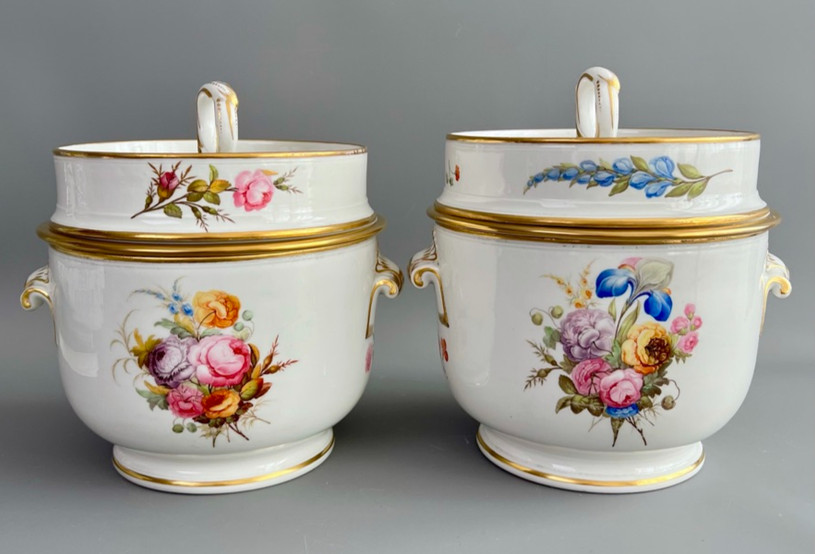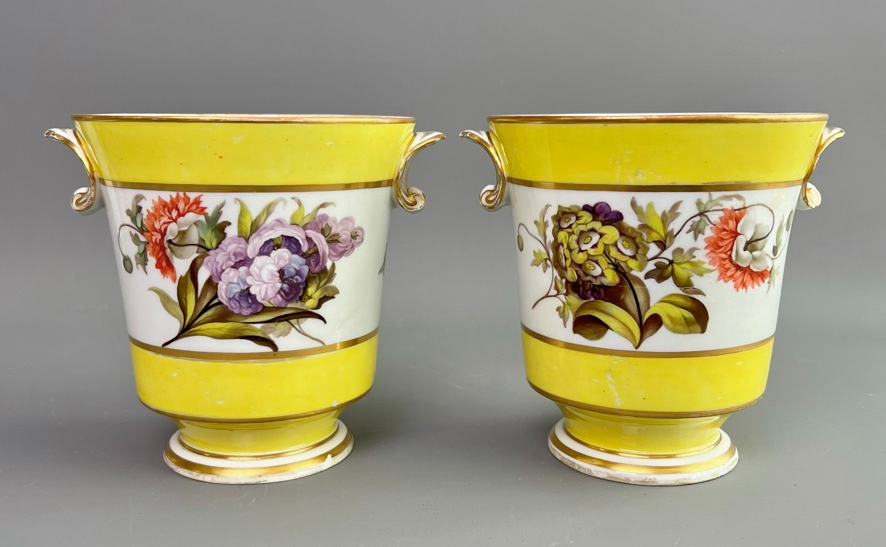Part 4: William Billingsley
Today it is time for Part 4 of my series on famous porcelain decorators: William Billingsley, one of the most iconic people in the history of British porcelain. We already had a small taste of the Billingsley genius with the fabulous Pinxton tea service last week, but today we'll look more at his hand painted decorations.
William Billingsley, born in 1758, was a brilliant but troubled man, leaving behind a trail of debts (and tears) alongside some very important innovations in British porcelain. Encouraged by his mentor, the king of landscapes Zachariah Boreman (who I wrote about a few weeks ago), Billingsley developed a free, flowing style of flower painting, presenting flowers playfully from all perspectives with shiny highlights. These highlights were a novelty at the time: instead of painting around a white spot in order to create the effect of light on a petal, Billingsley applied his paint thickly and then wiped it out, creating a stronger, wet-looking effect. This, as well as the flowing style, was to become the quintessentially British style of porcelain painting, contrasting with the more restrained Continental style.
This is not to say that every work he painted was a masterpiece: there were many more traditional patterns that Billingsley dutifully painted particularly while working for Derby and Worcester; after all, it was a job. But it was in the more fanciful designs that he had freedom to determine himself that Billingsley excelled.
Billingsley, however, had bigger dreams than flowers; his true passion was making porcelain. English porcelain was still rather crude compared to the fine Continental porcelains, and Billingsley became obsessed with finding a British equivalent. That's why he started the Pinxton factory in Derbyshire, which produced some beautiful porcelain (see the tea service from last week) but, due to the high kiln wastage, the business couldn’t survive. He then ran a decoration studio in Mansfield, Nottinghamshire (see these two plates I have available), but mysteriously disappeared. In fact, he had walked hundreds of miles and renamed himself William Beeley to escape creditors, finally reappearing penniless at the Flight & Barr factory in Worcester in 1808, where he was hired to improve the factory’s porcelain body.
Billingsley’s recipe caused so much kiln wastage that it was too expensive for commercial use and the savvy Worcester factory never adopted it, but instead got him to paint dessert services such as this splendid one, and then paid him £200 for keeping the porcelain recipe secret. Instead, he ran off to Nantgarw in Wales, using the money to set up another factory. That became a short-lived but defining experiment of the finest British porcelain ever made. However, at 90 per cent kiln wastage (of every 10 items fired, only one survived) money ran out quickly and Billingsley absconded yet again, this time walking a further 100 miles to Coalport, Shropshire, where he remained until his death.
I currently have many items available that were decorated by Billingsley himself, so have a look at his amazing flowers... And if you want to own a piece of history, they are available!
Where to find things
I've made a page with William Billingsley items here. You can find all my available stock here. If you always want to see the latest additions, follow me on Instagram... I post pictures and a story several times a week.
Happy weekend everyone! 🌸🌹🌼
This week's new treasures:


































































Kommentare